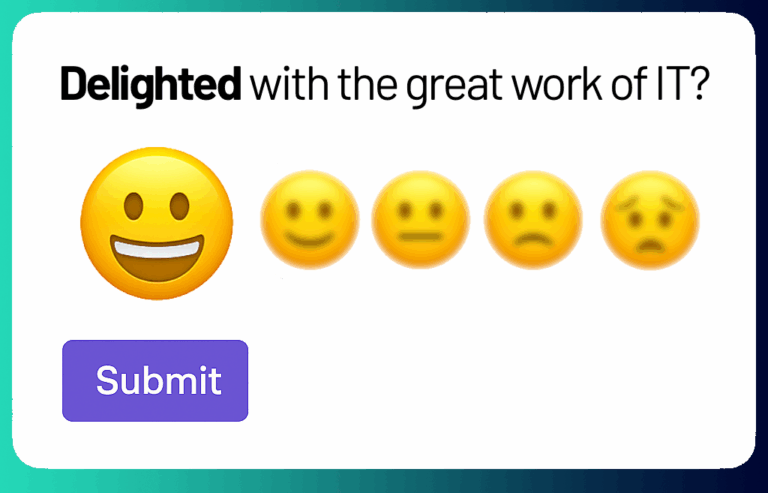Survey fatigue isn’t just about too many surveys. Understanding the four root causes helps IT teams design better questions, set the right cadence, and drive real improvements.
I recently read a letter in the Journal of Caring Sciences titled “Survey Fatigue in Questionnaire Based Research: The Issues and Solutions.” It makes a point that resonates strongly with what we see in IT experience measurement: survey fatigue isn’t a single issue.
“Individuals become tired and uninterested in answering the questions of surveys… provide less thoughtful answers… or prematurely terminate participation.”
In IT, where organisations rely on surveys to understand employee experience, these problems show up quickly. Post-ticket surveys, rollout surveys, annual experience surveys – all valuable individually – can collectively create a culture of overload if not handled carefully.
Survey Fatigue Has Many Causes
The letter identifies four forms of survey fatigue that map almost perfectly to the challenges we see across IT teams:
- Over-surveying occurs when people are asked for feedback too frequently. The letter notes respondents may “become exhausted or ambivalent from seeing frequent survey invitations.”
- Question fatigue happens within the survey itself. As the author explains, this emerges when questionnaires include “repetitive questions or ask the same idea in various ways.” Users feel like their time isn’t valued.
- Long surveys are the most obvious culprit. The letter highlights that long surveys cause people to “quickly tire, lose motivation, or prematurely terminate participation.” While the intent is good, the result is disengagement.
- Disingenuous surveys may be the most damaging. These occur when users believe feedback won’t lead to change. According to the letter, they develop when respondents suspect “leadership may not truly acknowledge or utilize the responses.” Every IT team has heard: “Why bother? Nothing ever changes.” Once that belief sets in, response quality – and trust – collapses.
Recognizing these different types of fatigue matters, because each one requires a different strategy. Treating “survey fatigue” as one thing leads organisations to apply the wrong solution.
Match Survey Cadence to Your Ability to Act
Surveying more often than you can implement improvements is a direct path to fatigue. If action cycles are quarterly, don’t survey monthly. With that said, timely micro-surveys can be effective during phased rollouts or rapid-change cycles, but only if the pace of change matches the frequency of surveying.
A simple rule: survey only as often as you can demonstrate progress.
Good Design Is the Real Antidote
Shorter surveys help, but thoughtful design matters more. Clear language, logical flow, relevant questions, and transparency about how results will be used all influence engagement.
How Voxxify Helps
At Voxxify, we help IT teams ask the right questions, at the right cadence, and take the right actions.
Effective feedback isn’t just about collecting data – it’s about driving continuous improvement. By keeping surveys short, specific, and purposeful, we help organisations maintain trust and ensure feedback leads to real, visible change.
Lessons for IT Teams
- Survey fatigue isn’t one thing – fix the right problem.
- Keep surveys short and well designed.
- Ask specific questions to get actionable insights.
- Match frequency to your ability to improve.
- Close the loop and show progress.
When designed well and acted on, surveys become a catalyst for better IT experiences – not a burden.



